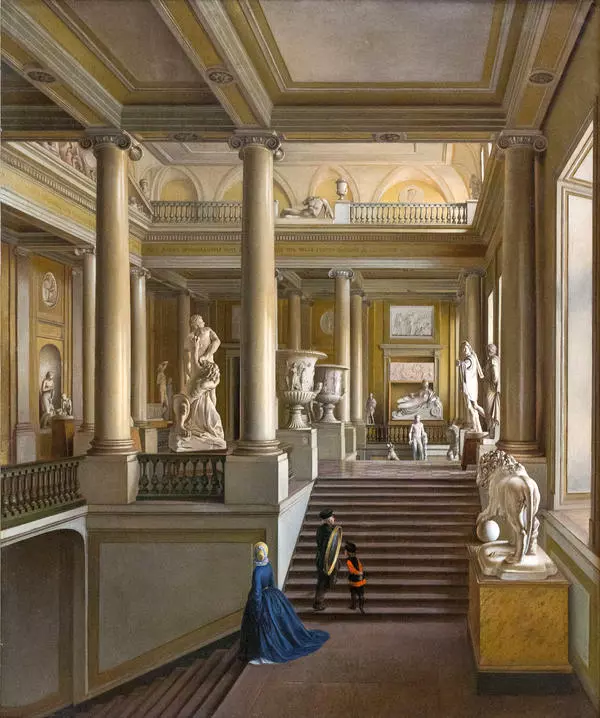“Crimea. Alupka” is a southern landscape. The shores of a small waterbody are surrounded by lush green vegetation, with a tall cypress tree towering above them. In the background, against a cloudy sky, the Ai-Petri mountain range can be seen. The landscape was painted by Ivan Ivanov.
Ivan Andreyevich Ivanov was an artist from St. Petersburg. He worked at the post office while trying to pursue his passion for painting. Not much is known about his biography. He studied at the Imperial Academy of Arts from 1844 as a non-matriculated student under the guidance of Maksim Vorobyov, professor of landscape. Ivan Ivanov specialized in painting landscapes and scenes from everyday life which were highly sought after. He was awarded the Small and Grand Silver Medals by the Academy of Arts for his landscapes painted from nature. He also had influential patrons among Russian art collectors, including Aleksey Tomilov. The artist often visited his estate Uspenskoye.
Ivan Ivanov created most of his paintings in the 1840s. Some of his most famous works include “Landscape with a River. Ekaterinhof”, “Landscape. The Uspenskoye Estate”, and “Horseback Riding”.
The National Gallery of the Komi Republic houses the painting “Crimea. Alupka” which also belongs to this period. Initially, it belonged to the collection of Fyodor Pryanishnikov, a famous landowner, art collector, and the director of the Russian Department of Post. It is possible that Pryanishnikov acquired the painting as a sign of support for Ivan Ivanov, knowing that the artist also worked at a post office.
In 1858, with the approval of Emperor Alexander II, this landscape, along with many other works, was bought from Fyodor Pryanishnikov and entered the Rumyantsev Museum in Moscow. After that, the painting was transferred to the State Tretyakov Gallery. In 1928, it was donated to the Komi Regional Museum of Local Lore, and in 1952 — to the Art Museum of the Komi Republic.
The exact date of the artist’s death is unknown,
with some sources suggesting that he died in Crimea on August 11, 1848, and
others indicating St. Petersburg and April 1, 1869.



